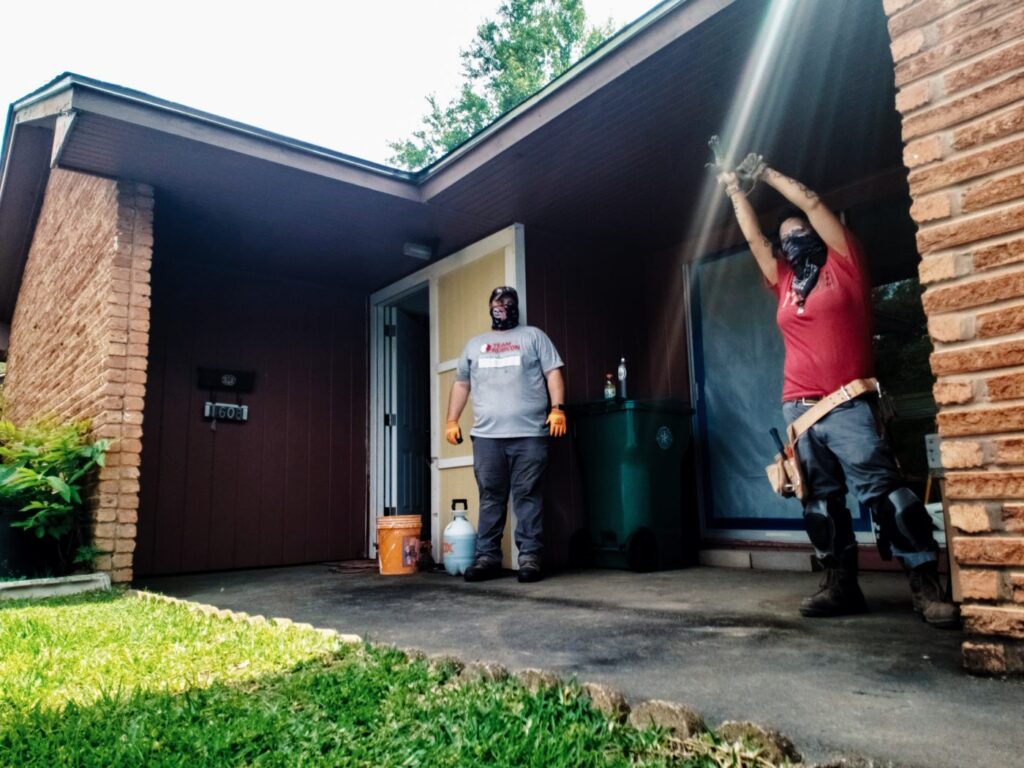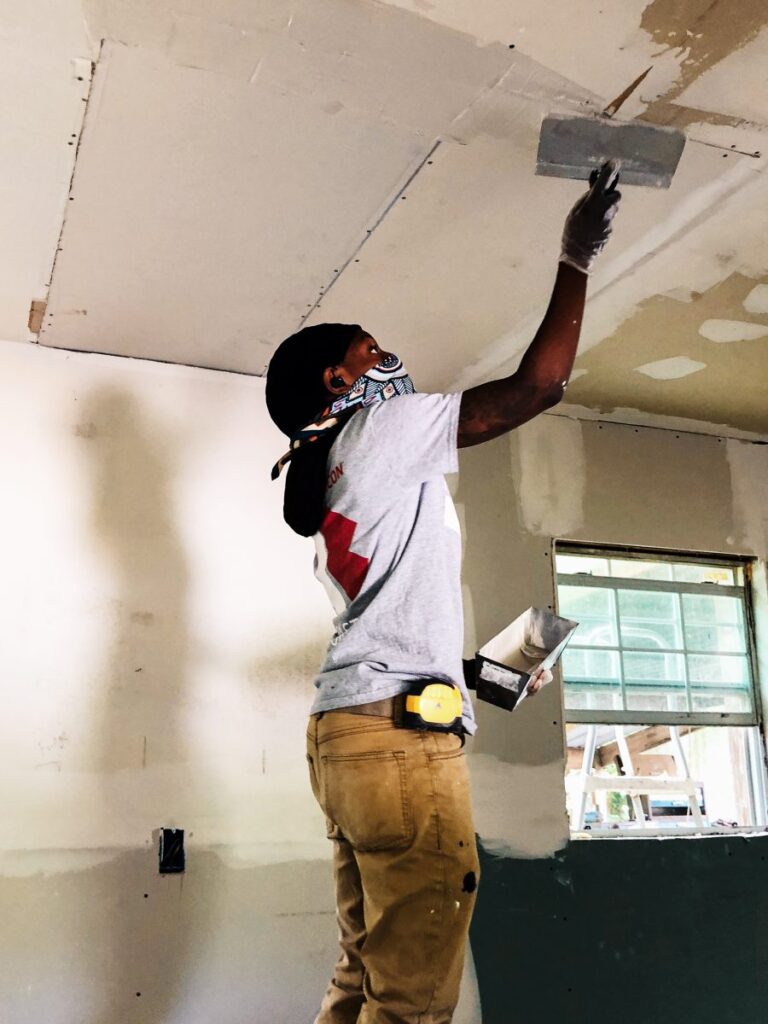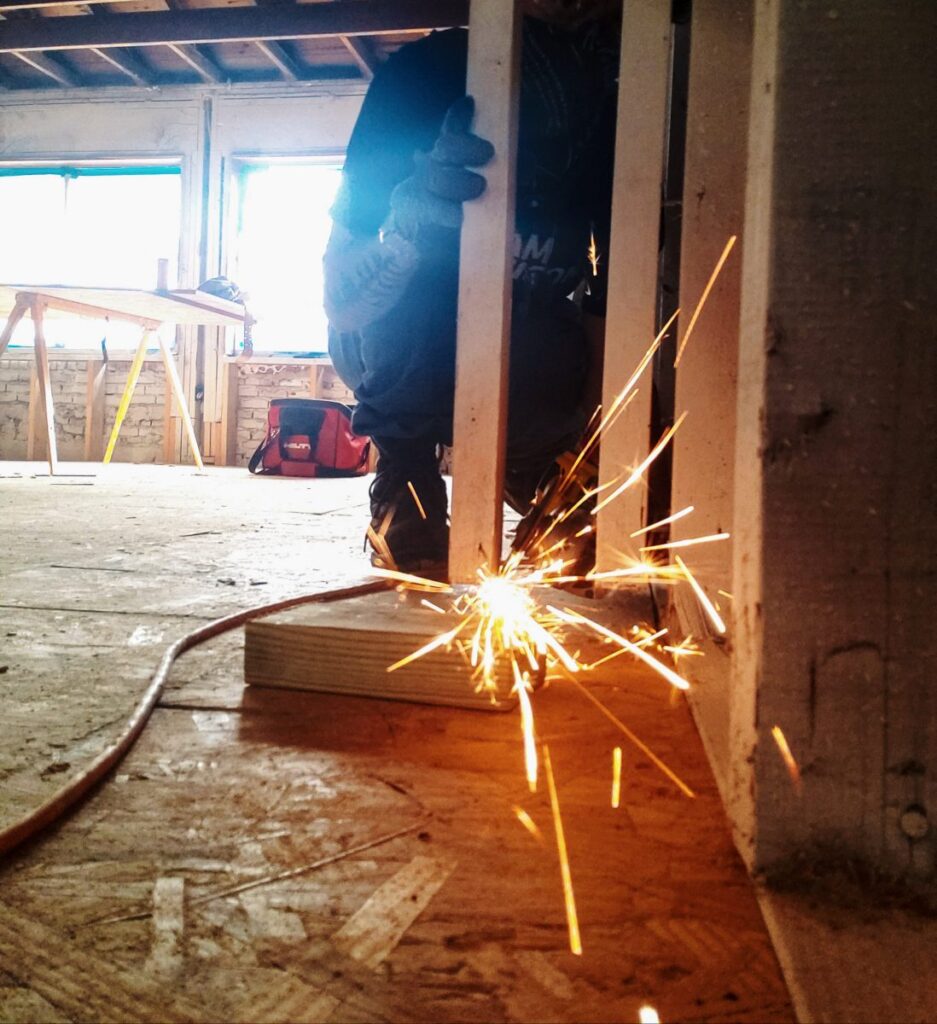Almost three years after Hurricane Harvey made landfall on the southern coast of Texas, many Houston residents are still unable to move back into homes badly damaged, or destroyed, by the storm. Then came 2020’s coronavirus outbreak, making their situations even more urgent. Sheltering in place can be difficult enough, but when your temporary housing is a hotel room, the challenges pile up quickly. For just that reason, a handful of veterans and civilians recently began doubling on their commitments to rebuilding Houston homes.

Rebuild Coordinator of Project Logistics Jess Gutierrez (in red) and a colleague outside a Houston home TR is rebuilding.
Team Rubicon launched its Houston Rebuild Operations in 2018, after responding to Hurricane Harvey. That program was complemented by outfitting 500 homes in Puerto Rico with roofs able to withstand hurricane-force winds after Hurricane Maria, and Rebuild Operations in Collier County, Florida, in response to Hurricane Irma. To date, 100 homeowners in Houston have returned to rebuilt homes. Still, when the coronavirus brought industry and nonessential work to a stop earlier this year, it applied to Rebuild, too. To protect Greyshirt volunteers and the community, Team Rubicon’s Rebuild also halted all reconstruction work in March.
A Pandemic Checklist for Rebuilding Houston Homes
Once construction work was allowed again, Team Rubicon made the decision to restart Houston Rebuild operations—with some contingencies. In order to get displaced families and homeowners home—and to their own shelters from COVID-19—Rebuild operations would have to proceed a little differently. The biggest shift made to work in this new environment is limiting personnel on scene: TR staff and contractors will supply the workforce until it is safe to call on Greyshirts to serve at Rebuild once again.

A Clay Hunt Fellow muds the ceiling in a Houston rebuild.
Other precautions have been set in place. While rebuilding homes in Houston during the coronavirus, every site foreman carries an extra checklist with strict safety guidelines in addition to their standard checklists. Face coverings and gloves are mandatory on all job sites, and physical distancing remains the new normal. That includes swinging sledgehammers with six feet of separation—safer regardless of a pandemic, anyhow.
So, just how do journeymen operate in close quarters while maintaining six feet of separation? One way is by adopting tools like drywall- and panel-hoist systems, which allow one person to do a job that usually takes two.
Jess Gutierrez, the Rebuild Coordinator of Project Logistics in Houston, has found the site a bit, lonely. So, to bide her time until her Greyshirt colleagues can return, Gutierrez has been serving alongside “Drywall Beau,” a life-size cut out clad in a drawn-on grey shirt

Gutierrez with Drywall Beau
Greyshirts aren’t the type who enjoy hearing they’ll have to wait to get back to work rebuilding homes for hurricane survivors. However, until the coronavirus risk has subsided, TR will redirect Greyshirt assistance to other programs than rebuild—like using them to get food to immunocompromised individuals.
Bringing Home the Pams
With Rebuild ramping up again, the team is currently working on two homes. One is the home of a long-time Houston resident named Pamela who recently lost her husband, a US Army veteran. After Harvey hit, the couple woke up to find their bedroom flooded. In the months following the storm, they stayed with friends until receiving a small payment from FEMA—enough to pay for some repairs before TR arrived to finish the job free of charge. Pamela looks forward to walking through her home without worrying about falling through a damaged section of flooring.
Across town, the team is working to help another homeowner, also named Pam, move back into the home where she and her late husband of 42 years shared many fond memories with their family. She is hopeful that Team Rubicon can restore her home and all its memories, and return her to a home where she can weather new kinds of storms, too.

Rebuilding Houston homes while social distancing.



